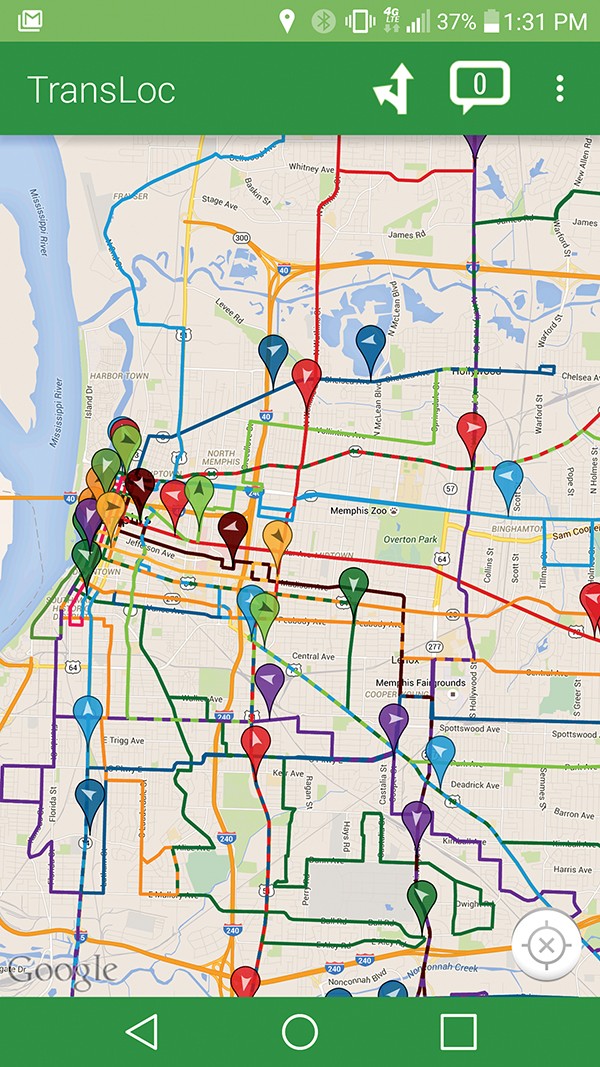If you catch the 19 Vollintine at Breedlove on a weekday morning, you might run into Cynthia Bailey. She’ll be waiting at the stop about 15 minutes before the bus comes with her backpack — full of what she calls her tools to educate citizens — over her shoulder.
As she rides the 19 to the Hudson Transit Center downtown, she starts conversations with fellow passengers and passes out the flyers. After staying at the bus station for about an hour, Bailey then packs up her materials, boards the 50 Poplar, and heads to her next destination: Cleveland and Poplar, where she sets up shop again.
Bailey, the co-chair of the Memphis Bus Riders Union (MBRU), says this is her routine most days. She spends her time educating other bus riders and non-bus riders on all things Memphis-transit-related. She considers herself an expert on riding public transit in Memphis because, as she says, she’s been using the buses here for 26 years.
Back in the ’90s, she rode a Memphis city bus to Raleigh-Egypt High School. Bailey has continued to use Memphis public transit ever since — even during periods when she owned a car. She called herself a “choice-rider” then.
Bailey now spends her time riding the bus around town and advocating for a better public transit system in Memphis — “like it used to be,” she says.
Bailey says she remembers the buses being more timely and more frequent, and they operated for longer hours. This, as well as better timing with route connections, is something she and other MBRU members have set as goals for the current system.
Still, Bailey says her “biggest issue” with the Memphis Area Transit Authority (MATA) is its lack of penetration into some residential areas. One of those is North Memphis, which for some time has had no bus service on streets such as Breedlove, Decatur, Manassas, and Firestone.
But, in June, the MATA board voted for a new route to bring service to those areas and others that were once served by the 31 Crosstown — a route that was eliminated in 2013 due to funding issues and that has been described as a “lifeline” by many in the community.
MATA will introduce 31 Firestone, along with three other new routes, for a trial period beginning this Sunday.
Bailey says she is pleased with the way MATA responded to the union and community’s pleas for a restored service to North Memphis.
MATA officials say that in order for the 31 Firestone route to continue after December, it needs to maintain at least five boards per hour throughout the course of the trial.
Chief communications officer for MATA, Nicole Lacey, says the Firestone 31 route comes as a result of the community’s feedback and expressed needs.
With limited funding, the route will only operate 10 hours a day, though, running for four hours in the morning, breaking in the middle of the day, and resuming for six hours in the afternoon through the evening.
Bailey says the MBRU, along with other organizations across the city, put in a lot of hard work to bring awareness to the missing service in areas like New Chicago in North Memphis, by holding town hall meetings, creating petitions, going door to door to pass out flyers, and educating members of the community. A key piece of the education was informing citizens on the reasons MATA elected to discontinue the 31 Crosstown route. She says the union understands it was because of funding issues, rather than a matter of discrimination, and it was important for the community to know that in order to properly petition for the service’s return.
Many of the residents in the New Chicago neighborhood are seniors who have been living in the community since the 1950s and ’60s, Bailey says. “They need a way to get to doctor’s appointments and everywhere else without having to pay for a ride or bother a family member,” she says. “It’s a victory for everyone.”
The new route, 31 Firestone, set to launch Sunday, August 6th, will run every 60 minutes, with stops including Manassas High School, Crosstown Concourse, North Public Library, and Christ Community Health Services.
Members of the MBRU believe it will provide those living in North Memphis communities better connections to groceries, jobs, and health care.
MBRU secretary Justin Davis says there is still a large population of people in South Memphis — once served by 31 Crosstown— who currently are not “necessarily well-served” by MATA.
Some of those residents include individuals living in the Riverside community who, Davis says, have expressed their need for a route that will connect them to major corridors, economic centers, and other essential spots in North Memphis. The next step for the union, he says, is to campaign for a fully funded route that directly connects South and North Memphis.
“Our goal is really to make sure MATA does not have groups that are significantly underserved,” Davis says.
For now, though, Davis says the union is pausing to celebrate the service coming to the New Chicago area by throwing a block party at the New Chicago CDC Saturday beginning at noon.
The party is meant to “raise the energy” around the new service, as well as provide an opportunity to make sure the members of the community know about the new route.
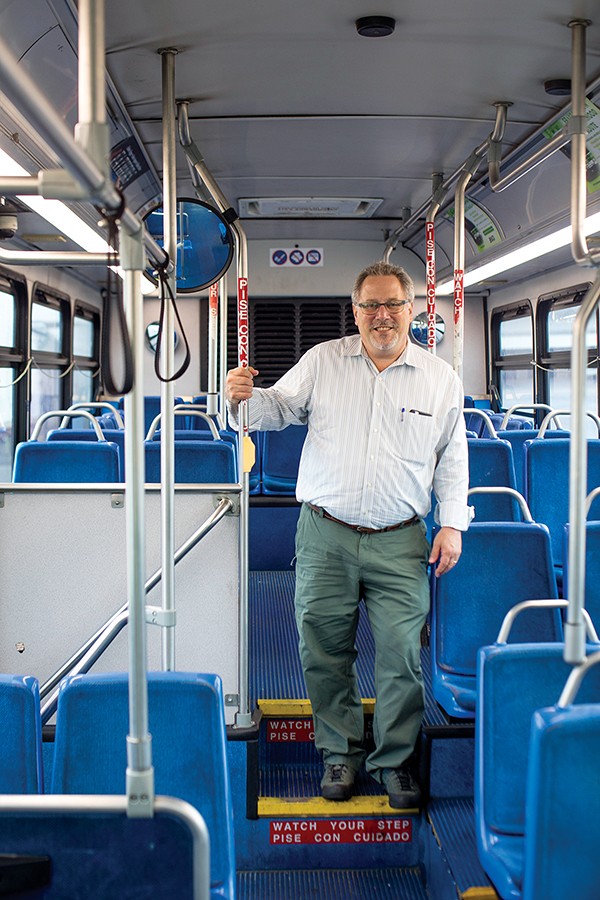
Interim CEO of MATA Gary Rosenfeld
New Routes and Route Changes
The Firestone 31 route is a demonstration route, which will run on a trial basis until December. Interim CEO of MATA Gary Rosenfeld says MATA ordinarily introduces new routes and makes changes to its routes and schedules in December and April. He adds, that after extra funding was made available for three new routes, the August 6th changes will be an exception.
The extra funding comes through the federal Congestion Mitigation and Air Quality (CMAQ) program, which pays for air-improving transportation projects in areas that the U.S. Environmental Protection Agency determined have poor air quality.
The grants will fund the three routes for three years, but Rosenfeld says the hope is that in the future these routes will be able to support themselves.
Two of three routes will be express routes, including one meant to “beef up service” near the Airways Transit Center, creating more efficient transfers, according to MATA’s director of planning and scheduling, John Lancaster.
The other express route — 340 Walnut Grove — will go from the Agricenter International to the Hudson Transit Center downtown and will offer a “park and ride” option, in which riders can park their cars at the Agricenter free of charge, catch the bus downtown, and return to their car at the end of the day.
In June, the MATA board also approved changes to 24 existing routes and their schedules. Routes that will be modified include 44 Goodlett IKEA Way, as well as two of MATA’s most used routes, 42 Crosstown and 50 Poplar.
All of the changes are designed to improve MATA’s on-time performance (OTP), which was at 76 percent as of June. Rosenfeld says he expects the latest route changes to raise OTP by at least another 5 percent.
Lancaster says there is a “whole process” that goes into determining where new routes should be placed and how often the buses on that route should run.
He says the authority uses a strategic planning document called the Short Range Transit Plan, which helps staff consider a particular area’s demographic makeup and land use, as well as the amount of jobs and residences in the area.
Because of a funding shortage, MATA must make revenue neutral service improvements. These are, as the name suggests, improvements that do not affect MATAs bottom line. With the exception of the 31 Firestone route, all of the new routes and improvements to the current routes are revenue neutral.
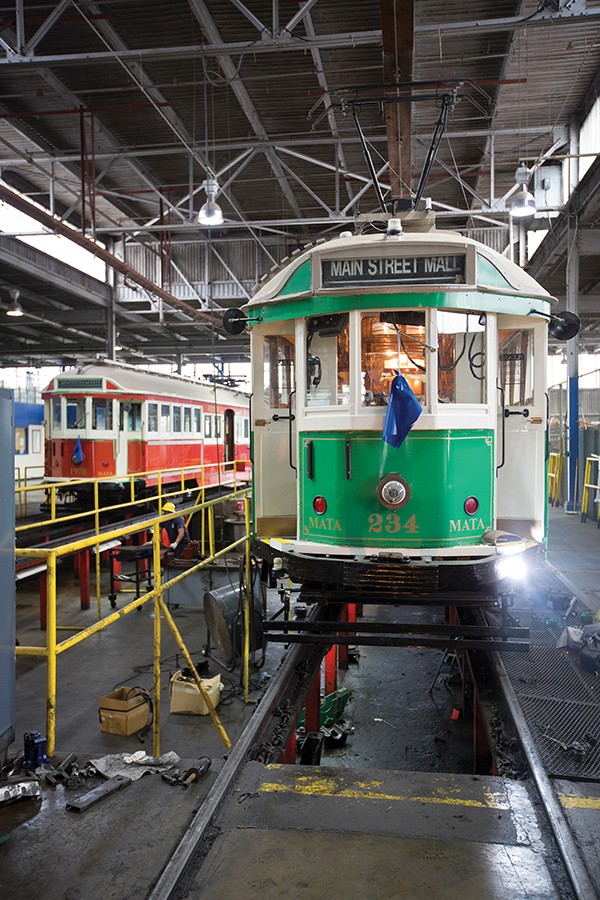
South Main trolleys under repair
The Trolleys’ Return
After a three-year absence, Rosenfeld says he’s hopeful the steel-wheel trolleys will be resurrected by year’s end, returning first to Main Street.
Before the trolleys were discontinued in 2014, after fires and other safety and inspection issues, MATA officials say about 1.5 million passengers used them annually. Half of the passengers were tourists.
It was important to bring back the trolleys, says Rosenfeld, not only because of their positive impact on downtown’s economy, but also because of their “rich history in the city. … It’s something the community wanted.”
Rosenfeld says restoring the trolleys has been an “extensive ongoing process that never ends.” One of the biggest challenges in restoring the trolleys, he says, was figuring out how to apply modern technology to 100-year-old trolley cars. Rosenfeld says the trolleys were modernized by re-engineering everything inside of them.
Before the trolleys are ready for passengers — after multiple levels of testing by engineers and safety committees and a review by the Tennessee Department of Transportation and the Federal Transit Authority — the trolleys must operate on a test basis for about four to six weeks without passengers. If all goes as planned and the vehicles are deemed safe, steel-wheel trolleys will begin carrying passengers on Main Street late this year, followed by trolleys on Riverside and Madison sometime in 2018.
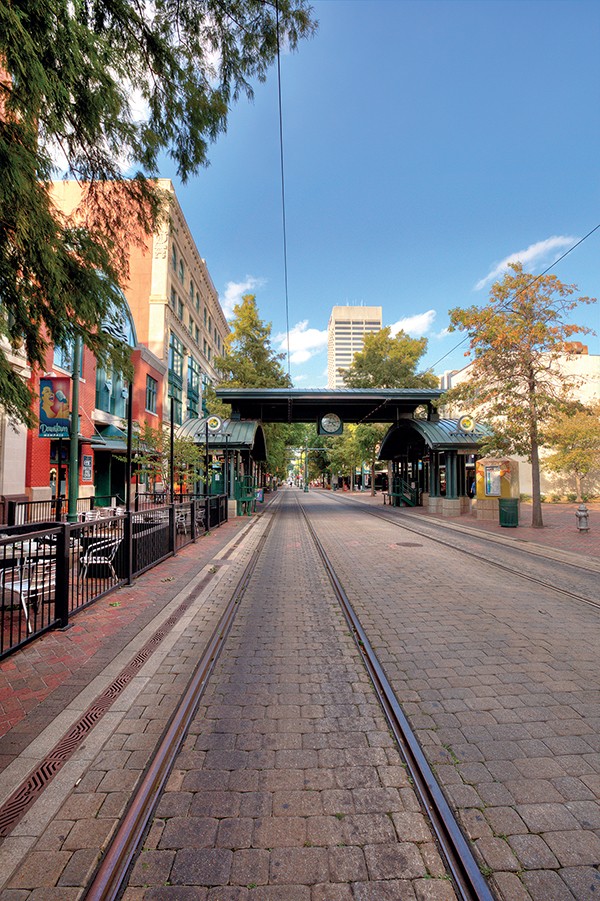
Trolley tracks on South Main on the mall
Funding Obstacles
One obstacle that keeps MATA from being the transit system that Memphis deserves, says Rosenfeld, is a lack of funding.
Currently, MATA’s operating budget is about $62 million per year, but Rosenfeld says in order to provide a good, quality service to the community, MATA needs an additional $30 million a year.
“Quality of service suffers when you’re operating on a shoestring budget,” Rosenfeld says. Because of low funding, he acknowledges that buses don’t run frequently enough for many passengers to rely on public transit to get them to school, work, the doctor’s office, etc. “If you look at our peer cities, like Nashville or Charlotte, either they have better funding or a denser population,” he says. “But they provide transit that allows people to really be mobile.”
About 35 percent of the MATA operating budget is allocated to wages. Without much discretionary funding, Rosenfeld says MATA is unable to make certain improvements and investments, including renovations to its 4,500 bus stops, newer buses, and equipment that would make it easier for the public to use the transit system, such as a MATA app for smartphones.
Rosenfeld says with more funding, the authority could also invest in better training for bus operators, which would improve the overall efficiency of the system. More secure funding, he says, would allow MATA to improve the “quality and the quantity of service in the city.”
There is some good news on that front. On July 1st, when the IMPROVE Act took effect in Tennessee, avenues opened for MATA to secure additional funding. The legislation gives the city council the opportunity to authorize a public vote on extra funding initiatives, such as a sales tax surcharge, vehicle registration fees, or occupancy taxes in hotels.
Rosenfeld says in the fall, MATA will begin putting together a proposal package to present to the city council early next year. Under the stipulations of IMPROVE, the presentation must include a stakeholder-sourced document detailing the community’s vision and goals for the future of MATA. Rosenfeld says there will be a lot of “information sharing” among organizations like Innovate Memphis to create this document, beginning in the fall.
As MATA begins to gather community feedback from stakeholders, Davis of the MBRU says he hopes this will be something that will include his union members. “We have always held that bus riders have the real expertise when it comes to transit systems and how they work,” Davis says. “They are the people riding the buses every day.”
Bus to the Future
Rosenfeld says he believes electric buses are the future of public transportation in the nation and, he hopes, for MATA as well. At the end of June, MATA applied to the Federal Transit Administration to receive 16 electric buses. Rosenfeld expects to hear back by the end of the year, anticipating that MATA will receive at least four of the buses, allowing for an entirely electric vehicle route to be created.
MATA is testing out one new electric bus that it has already received.
As for MATA ridership, Rosenfeld says it has been decreasing over recent years, following the national trend which, depending on the region of the country, has dropped 5 to 10 percent in the last two years. Most attribute the national decline to the recent uptick in ride-sharing app users, such as Uber and Lyft. MATA officials say more than 22,000 riders are using its near 50 routes each weekday.
Moving forward, Rosenfeld hopes to make MATA’s services easier to use, closer to necessities, and more responsive, while creating more equity for riders.
MATA’s goal, eventually, he says, is to provide a transit system that “gets anyone to anywhere in the city of Memphis in no more than an hour.”
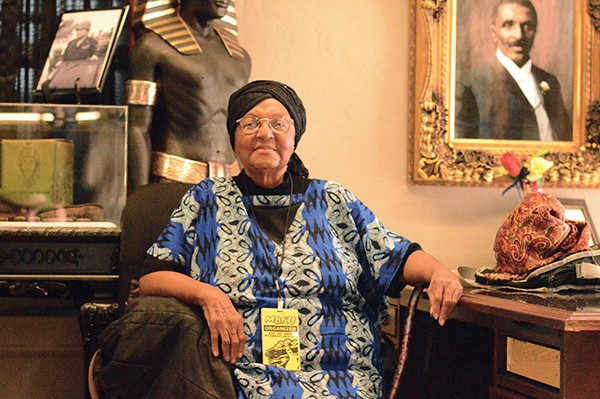
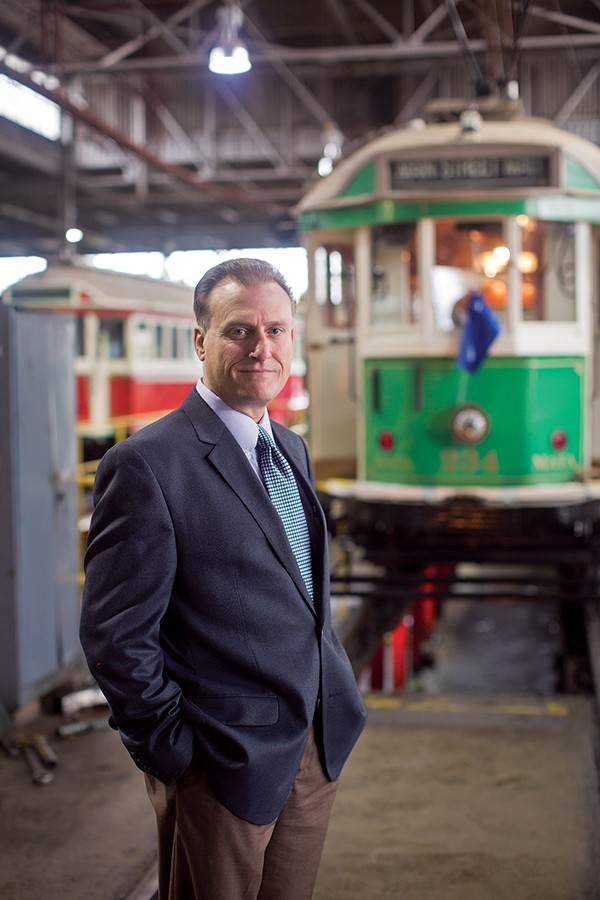
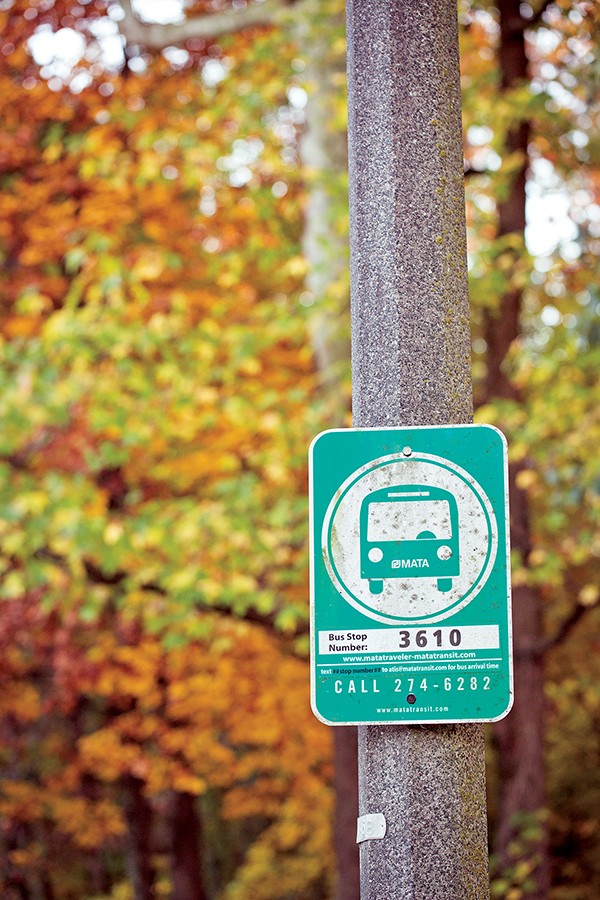
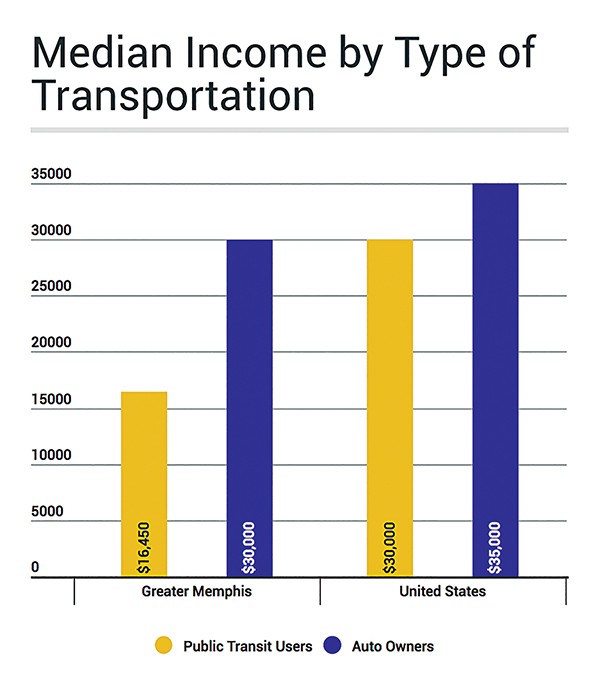 Elena Delavega, PhD, University of Memphis Department of Social Work. Research published August 15, 2014.
Elena Delavega, PhD, University of Memphis Department of Social Work. Research published August 15, 2014. 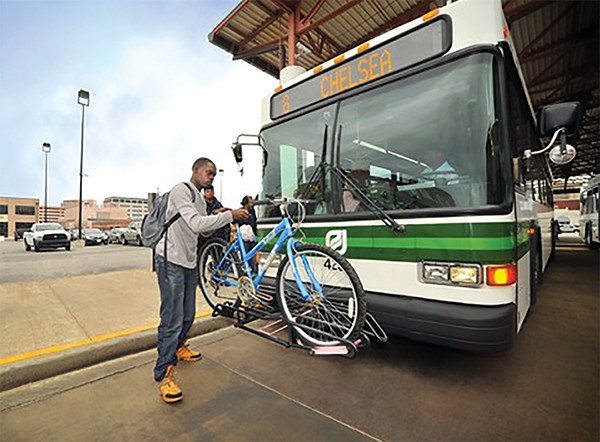

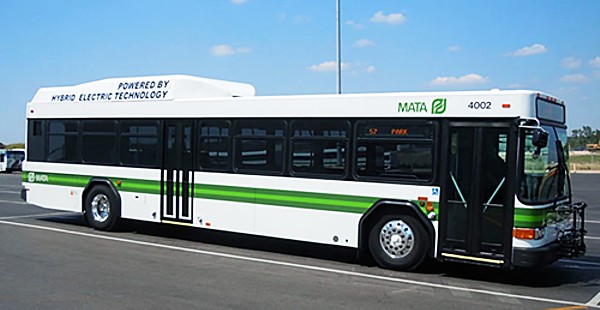
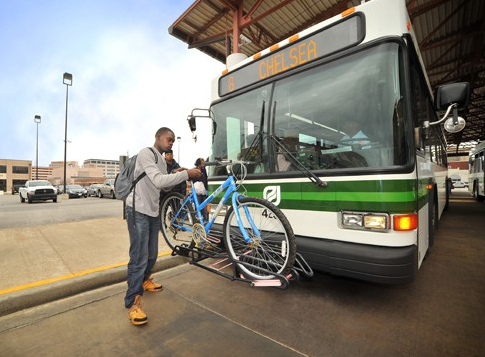
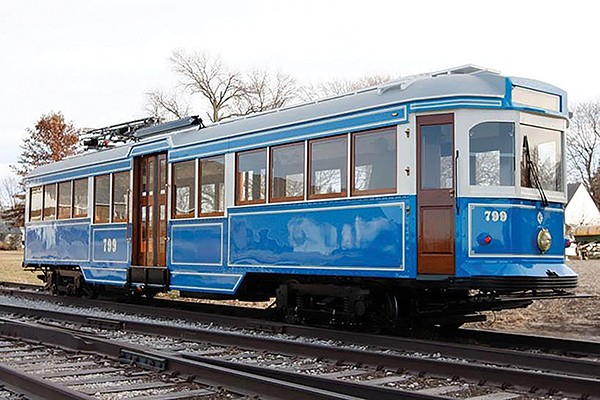 Memphis Area Transit Authority
Memphis Area Transit Authority 